The founder of the Wertheim Glass Museum
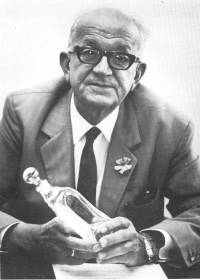
Dr. Hans Löber
(1900 - 1978), glass physicist + director of the Wertheim glassworks (1950 - 1993) 1st chairman + museum director until 1978 successor (until 1995): Gertrud Löber
1995 - 2022: Marianne Tazlari (museum director)
since 2022: Heike Baumann (Museum Director)
1998 - 2008: Wolfgang Schuller (1st Chairman)
2008 - 2024: Paul Hahmann (1st Chairman)
since 2024: Bernd Maack (1st Chairman)
The GLASMUSEUM WERTHEIM goes back to an initiative of the glass physicist and glass entrepreneur Dr. Hans Löber (1900 - 1978) from Thuringia. Together with a group of Thuringian glass experts who settled in Wertheim after 1945, he founded the "Glaswerk Wertheim" (1950 - 1993, today: Duran Group/DWK Life Sciences) in 1950 and thus laid the foundation for the laboratory glass industry based in Wertheim. In 1973, he joined forces with members of the Wertheim laboratory glass industry and formed the supporting association Wertheimer Glasmuseum e. V. (today: GLASMUSEUM WERTHEIM e. V.).
Wertheim Glass Museum: The History
When the founder of the GLASMUSEUM WERTHEIM, Dr Hans Löber (1900 - 1978), called for the foundation of a glass museum in Ilmenau in Thuringia in March 1943, he could not have known that his wish to establish a glass museum would only come true after more than 30 years.
As an entrepreneur and glass physicist, he was instrumental in founding and building up the Wertheim laboratory glass industry and became the first manager of the Wertheim glassworks "Glaswerk Wertheim" (founded 1950, closed 1993).
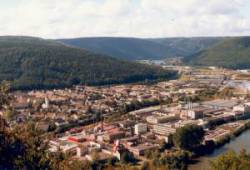
During all these years he always kept the dream of the glass museum to be built and collected glass with the aim and with the view of being able to donate it to the glass museum later on.
When, at the beginning of the 1970s, he had to slowly curtail his entrepreneurial activities due to his age, he created the necessary personal space to bring the glass museum into being. Together with some like-minded people, he founded a supporting association - the Förderkreis Wertheimer Glasmuseum e. V., today: GLASMUSEUM WERTHEIM e. V. - and took over its chairmanship.
The "Big House
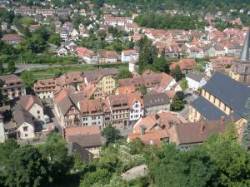
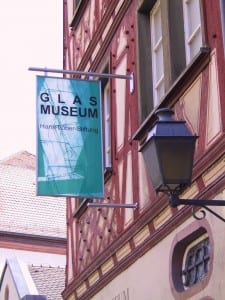
In 1972, the city of Wertheim acquired the Löwenstein-Rosenberg farmstead with the "Kallenbach'schen Haus" belonging to it. Dr Hans Löber then persuaded the then mayor Karl Josef Scheuermann to make this half-timbered house dating from 1577 available for the glass museum. The house, called "Großes Haus", had to be renovated from the ground up. Dr Hans Löber found Hermann Thees as a comrade-in-arms, who supported him with advice and, above all, action. Thees was also an entrepreneur in "retirement".
On 29 May 1976, the GLASMUSEUM WERTHEIM was opened with an exhibition area of 400 square metres. The diversity of the material glass could be shown on three floors.
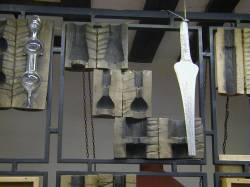
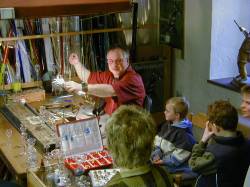
On the ground floor, the GLASMUSEUM WERTHEIM teaches how glass is made(mould wall) and how glass is processed (museum workshop). You can purchase glass artworks in the museum shop.

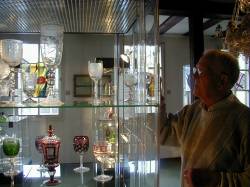
The A - Z Collection
On the first and first floors, the GLASMUSEUM WERTHEIM shows more than 3000 years of glass history, thanks to the "Collection of Historical Glass" donated by Dr Löber: from Egyptian luxury albums to 19th century glass.
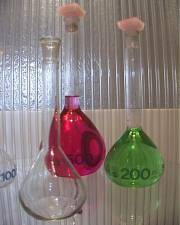

glass art, thanks to the collection of "Modern International Studio and Lamp Glass Art", also donated to the Friends by Dr Löber, as well as technical glass products, which are particularly oriented towards the local glass industry. With approx. 2300 employees in approx. 25 glass processing companies, Wertheim is today the second most important centre of the German laboratory glass industry after Mainz (1950/60s: approx. 3000 employees; 1970s: approx. 2800 employees in approx. 80 glass processing companies).
The "Little House
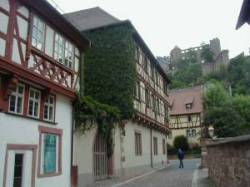
In 1996, the town of Wertheim made a second half-timbered house from 1588 with an exhibition area of 250 square metres available to the Förderkreis. This house, also a listed building, called the "Little House", was restored by the city, the state, the Förderkreis and the district from 1996 to 1997.
In 1998, the "Small House" was opened and presents in-depth information on individual glass themes on two floors:
- annual temporary exhibitions (since 2016: "Historic Christmas tree ornaments collection" - Thuringia Christmas tree ornaments industry and its development from 1860 until today)
- the "Glass Bead Cabinet" (since 1998, 1st floor) with glass beads from the collection of the Mainz scientist Thea Elisabeth Hävernick (1899 - 1982),
- the "Scientific Glass Cabinet" (since 2000, 1st floor)
- the "Paperweight Cabinet" (page 2012, 1st floor) with the Peter von Brackel collection
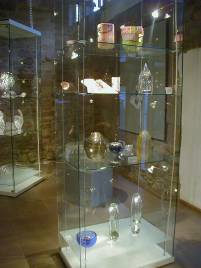

Today

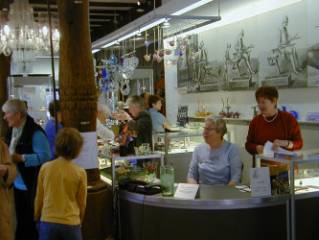
Today, the GLASMUSEUM WERTHEIM with its two houses has 650 square metres of exhibition space at its disposal. In these two houses, the GLASMUSEUM WERTHEIM shows one of the most fascinating and versatile materials of mankind: GLASS. The glass museum was completely redesigned in 2006 in order to convey this diversity to the visitor in a vivid and tangible way.
From A as in old glass to Z as in Zeiss lens, the visitor walks through more than 3000 years of glass history like in a glass encyclopaedia. In a vivid and playful way, they discover the close connection between the history of glass and the history of human culture through examples of glass rich in contrast.
Since April 2006, the GLASMUSEUM WERTHEIM has been a member of the Federal Association of Children's and Youth Museums (BDKJ). 35 glass play stations for touching, playing, experimenting and trying out, including the two play and experiment fields "Lenses, magnifying glasses, moving light" and "Measuring with glass", which the GLASMUSEUM WERTHEIM set up in 2005 with the Ochsenfurt play construction site (Würzburg-Kist), are based on the "Hands On!" principle of the international and European children's museum association. The glass play stations enable children and young people to discover the glass museum for themselves in a playful way and to understand the diversity of the material glass with all their senses: See - feel - hear - understand glass.
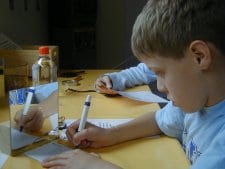
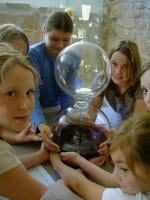
Thanks to the support of patrons and sponsors, thanks to prudent and timely budget management and thanks to members committed to glass and its visitors, the Förderkreis GLASMUSEUM WERTHEIM e. V. hopes to remain self-supporting and one of the few financially independent museums in the country.